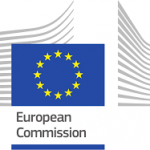“It is time for Human Resources and talent management professionals to stop looking at what divides us among the generations and start with what keeps us together‒our desire for our organizations to succeed, our need for good leaders, finding success in our careers, and recognizing that we all face aging and uncertainty in our future” (White, 2011, p. 6).
Diversity is an asset. There’s no doubt about it. The question to ask is what degree of diversity and what kind of diversity is the best mix for each specific workplace environment. This question also applies when it comes to generational diversity. Not quite the same as age groups, generations are groups whose work trajectories have been affected in similar ways by historical or organizational events. To put it more clearly, it is one thing to look at how a group of 25-30 emergent adults understand work-life balance because of their age, but it is quite another to group those workers in a company with others workers whose lives have been affected by changes in the company’s structure after a takeover or by new legislation that delays retirement.
In general, when we talk about age groups and generations at the workplace we come to see that the passage of time in people’s lives and work trajectories most definitely shapes how these people approach and confront work . The organizational challenge is to make it possible for the values and assets of every age group and generation to be combined in a way that enhances job satisfaction and productivity throughout longer lives.
Colleagues at the Global Institute for Experienced Entrepreneurship argue that the ‘experienced economy’ seems to be the only natural resource that is growing. Are we aware of this growth? Also, a recent report by Sodexo has concluded that “today’s workforce spans five generations, and employers who promote intergenerational learning initiatives for their employees optimize the value of these five generations in their organization. Catalyzing intergenerational experience is a new source of competitive advantage that benefits all generations and organizations.”
How can we draw from current age and generational diversity at the workplace to develop stronger and more efficient teams while at the same time countering negative age and generational stereotypes and promoting an active ageing culture? This is the real challenge that lies ahead.
Through ASPIRE’s research we have learned that attention must be paid to intergenerational issues at the workplace, such as (i) the tendency to undervalue the practical experience amassed by older workers in favor of the higher levels of education that younger workers often have; (ii) older workers’ vulnerability in the event of cost cutting measures, because of their higher salary compared to younger employees; (iii) the generational divide that can arise out of younger workers’ complaint that older workers are favored, because of their need to work with great dedication in the final stages of their career in order to qualify for a decent public pension; (iv) the pressure exerted by younger generations of workers on older ones, urging older employees to stop working and thus make room for younger ones.
What can be done about these and other challenges of this type? Some tips follow
- Do a scan of the barriers to intergenerational learning that might exist within your organization’s teams (see Annex I).
- Determine the quality of your workplace’s intergenerational atmosphere using a valid scale (see Annex II).
- Introduce knowledge management systems by which older workers can pass on knowledge to younger workers.
Kaplan, Sánchez & Hoffman (2017) discuss a study performed in the U.S., the Older Mentors for Newer Workers intervention, on the life satisfaction of aging workers. The study sampled 22 culturally diverse workers, ages 55 to 75, who were employed full-time at a nonprofit community service organization. These workers were matched on a one-to-one basis with newer agency workers and were asked to mentor the latter ‒by listening and offering support‒ during a six-month period (Stevens-Roseman, 2009). This opportunity for generations to meet and relate to each other brought about increased life satisfaction for older workers and provided valuable support to newer agency workers.
- Bilateral bodies can be used to support intergenerational learning and restoration of employability. Older workers, especially those wanting to phase into retirement, can be redeployed to train younger workers, especially those who have been, or are at risk of becoming, unemployed. Such programs can be pathways to sustainable work for both generations. For older workers, training younger workers can be a way to reduce the level of physically demanding work, while for younger workers it can provide the chance to upskill and transition into permanent work.
- Consider the implementation of an Intergenerational Solidarity Pact, such as the following program set up in Italy:
“An example of cross-generational solidarity is found in the national sectoral collective agreement (NCLA) of the [Italian] banking sector. A provision of the NCLA renewed in 2015 invites the managerial staff to contribute 4% of their fixed salary to the F.O.C. (the National Employment Fund, set up in 2012 to create fruitful and stable employment by supporting the permanent employment of young people), to demonstrate solidarity between generations.”
- Provide opportunities for generations to meet, relate and co-operate. The UK coach operator National Express has recruited people for whom age and extended career breaks create an obstacle to finding employment, including the over-50s, women returning to work after raising children, the long-term unemployed and full-time care-givers. “We place a high value on a diverse workforce because it reflects our broad customer base and we believe our business is strengthened by a wide range of skills and experience,” said Tom Stables, managing director for the company’s UK coach division.” (Groom, 2016).
- Re-balance specific weaknesses of each generational group.
- Try to meet the expectations held by each generational group.
- Foster the intergenerational profile of the workforce. How to do it? The SILVER project (Successful Intergenerational Learning through Validation, Education and Research) drew up the following checklist of critical factors in the creation of an intergenerational workforce:
Recruitment
Develop a strategy to hire both older and younger employees (in proportion to the desired age demographics of your workforce).
Health management
Implement programs that promote good health, for example: ergonomics, exercise, diet, disability management, health checks, information and communication, etc.
Training
Focus on creating a practical and work-oriented learning environment in which employees are encouraged to define their own learning objectives, in addition to the prescribed learning content for the group.
Provide a variety of training options.
Consider different forms of job mobility and learning opportunities
Explore options for job rotation, cross-training and lateral movement or the possibility of working on high-visibility projects. Provide choices in terms of team formation and expand the scope of participants’ action and decision-making.
In case of an aging workforce and limited hiring possibilities
Consider incentives for older employees to continue to improve their skills and knowledge (for example, with a reward program or wage increase for participation in training).
Develop an environment in which new ideas to improve production or service provision are welcomed, examined and, when deemed especially useful, rewarded.
Work environment
Provide an age-friendly workplace (work environment, working time and working structures) that is conducive to learning. Features of a learning-conducive workplace include:
Adequate information on the aims and purpose of job tasks is provided
Employees are encouraged to participate effectively in specifying the aims, planning and organization of the work
Opportunities for own work’s control and improvement are offered
Workers are asked to perform tasks that are variable and complex, yet also manageable
Feedback on success and achievement is given
There are opportunities for communication and cooperation
There are opportunities for cognitive and emotional reflection (Spannring, 2008)
Retirement models
Provide employee-oriented retirement models that allow employees to work longer but also have enough flexibility to accommodate employees who do not want to work, or are unable to work, at full capacity until retirement age.
Communication and change management
Promote awareness among executive staff, management and employees as to how demographic changes will affect them personally and how to respond to social and organizational changes.
Organize age management workshops or seminars for the executive staff with a focus on communicating information about ageing and work.
Encourage employees to learn to assume more responsibility for themselves regarding financial matters, maintenance of their health and their skills.
Leverage the benefits of social networking tools to build relationships, increase collaboration and enhance employee engagement. Examples include video conferencing, blogs, an internal company “facebook”, use of C-vision, podcasts, etc.
Management of age and intergenerational relations (SPReW project)
The SPReW project (Generational Approach to the Social Patterns of Relation to Work), which involved partners from Belgium, France, Germany, Hungary, Italy, and Portugal, published a guide for practice that includes pathways and recommendations for better management of age and intergenerational relations in the area of work and correlated fields:
– age-diversity management: approaching different age-related attitudes and competencies as resources; facilitating mutual understanding among different age groups.
– practices of knowledge management: assessment, valorization and exchange of skills and experience regarding old and young workers and knowledge transmission in both directions.
– more recognition of experience of old workers, also involving them in mentoring projects.
– designing new training systems and career paths according to heterogeneous needs in different phases of the life cycle.
– enhance job satisfaction, especially addressing young people’s expectation of autonomy, the middle generation’s need for flexible working, the older generation’s need to avoid tasks that are too heavy and demanding.
Types of intergenerational learning practices (SILVER project)
- Intergenerational and reverse mentoring, i.e. when an older worker mentors a younger one, and also the opposite: when the younger worker is the mentor.
- Intergenerational teams, or mixed-age teams, are explicitly created in order to gather a diversity of knowledge, skills, and experience.
- Intergenerational knowledge capture: a tested method used for codifying expert knowledge in such a way that it can be easily transferred and understood by others.
- Intergenerational training and workshops to stimulate learning among and between the generations.
Questions to consider
- Do you have a diverse generational profile in your workforce?
- What are some of the barriers to intergenerational learning within your organization’s teams?
- What is the quality of your workplace’s intergenerational atmosphere?
- Are you able to list any intergenerational practices already underway at your workplace?








